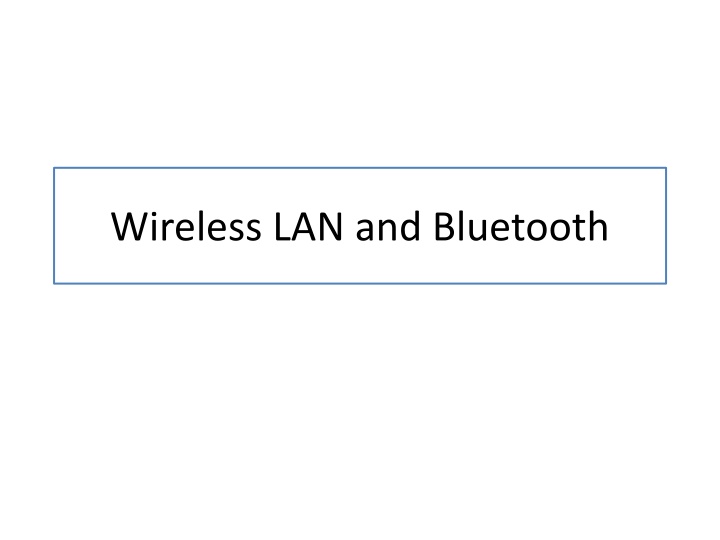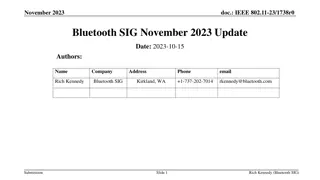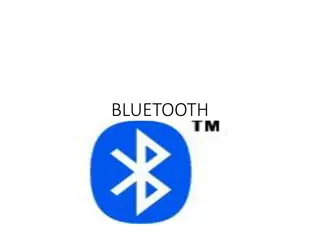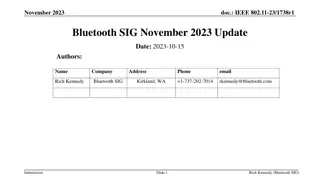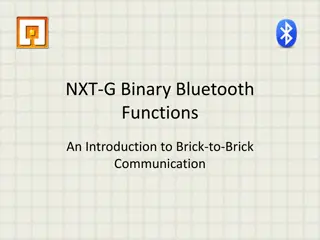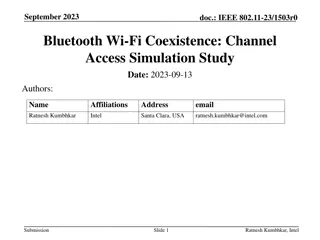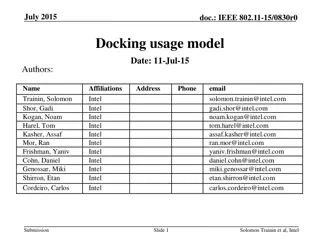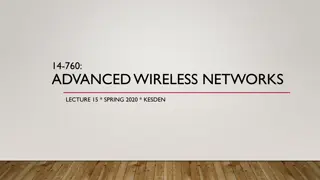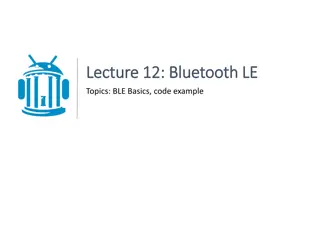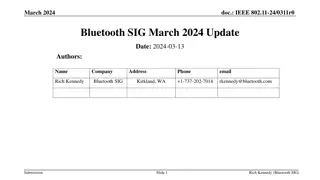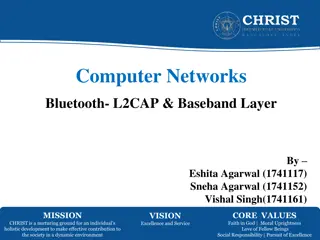Wireless LAN and Bluetooth Overview
IEEE has defined specifications for wireless LAN through IEEE 802.11, covering physical and data link layers. The standard includes Basic Service Set and Extended Service Set, which are essential building blocks of wireless LAN networks. Basic Service Set involves stationary or mobile wireless stations, access points, and Ad hoc architecture. On the other hand, Extended Service Set deals with transitioning between different types of stations and mobility within the network. The MAC sublayer incorporates the Distributed Coordination Function, using CSMA/CA access method due to cost and signal issues. It employs the Network Allocation Vector to manage channel occupancy and collision avoidance. Fragmentation in frames allows for efficient data transmission with various control frames and address fields.
Download Presentation

Please find below an Image/Link to download the presentation.
The content on the website is provided AS IS for your information and personal use only. It may not be sold, licensed, or shared on other websites without obtaining consent from the author.If you encounter any issues during the download, it is possible that the publisher has removed the file from their server.
You are allowed to download the files provided on this website for personal or commercial use, subject to the condition that they are used lawfully. All files are the property of their respective owners.
The content on the website is provided AS IS for your information and personal use only. It may not be sold, licensed, or shared on other websites without obtaining consent from the author.
E N D
Presentation Transcript
IEEE 802.11 IEEE has defined the specifications for a wireless LAN, called IEEE 802.11, which covers the physical and data link layers. The standard defines two kinds of services: Basic Service Set Extended Service Set 2
Basic Service Set Building block of Wireless Lan. Stationary or mobile wireless station. Access Point (AP) Ad hoc Architecture Stand alone network. No AP required Infrastructure Network 4
Station Types No transition BSS transition ESS Transition Mobility 6
Distributed Coordination Function Uses CSMA/CA for Access Method Can t use CSMA/CD for three reason: Costly equipments Hidden Station Signal Fading - distance 8
Network Allocation Vector A station sends a RTS frame to occupy a channel. Includes the duration of transmission Other station creates a timer -- Known as NAV Collision still occur How ? Two or more stations can send the RTS frame at the same time. There is no such mechanism for collision detection, they assume that CTS not received and employ the back off strategy. Retransmission occurs. 11
Fragmentation Frame type Control frame Type and subtype of FC field Four address fieldSequence # CRC NAV 12
Frame Types Management Frames initial communication Control Frames channel access and acknowledgement Data Frame 14
Frame Types Values of subfields in control frames 15
Addressing mechanism Table 14.3 Addresses 16 14.16
Addressing mechanism 17 14.17
Hidden Station Problem 18 14.18
Hidden Station Solution 19 14.19
Bluetooth 20
Bluetooth Bluetooth is a wireless LAN technology designed to connect devices of different functions such as telephones, notebooks, computers, cameras, printers, coffee makers, and so on. A Bluetooth LAN is an ad hoc network, which means that the network is formed spontaneously. 21
Bluetooth Application Peripheral devices Home Security Monitoring Devices Developed from a project of Ericsson Company. IEEE 802.15 Wireless Personal Area Network Architecture Piconet Scatternet 22
Bluetooth 23
Scatternet 24
Bluetooth TDD-TDMA Half duplex communication system where sender and receiver cannot send at the same time. Single Secondary communication Time slot of 625 Micro Second 26
